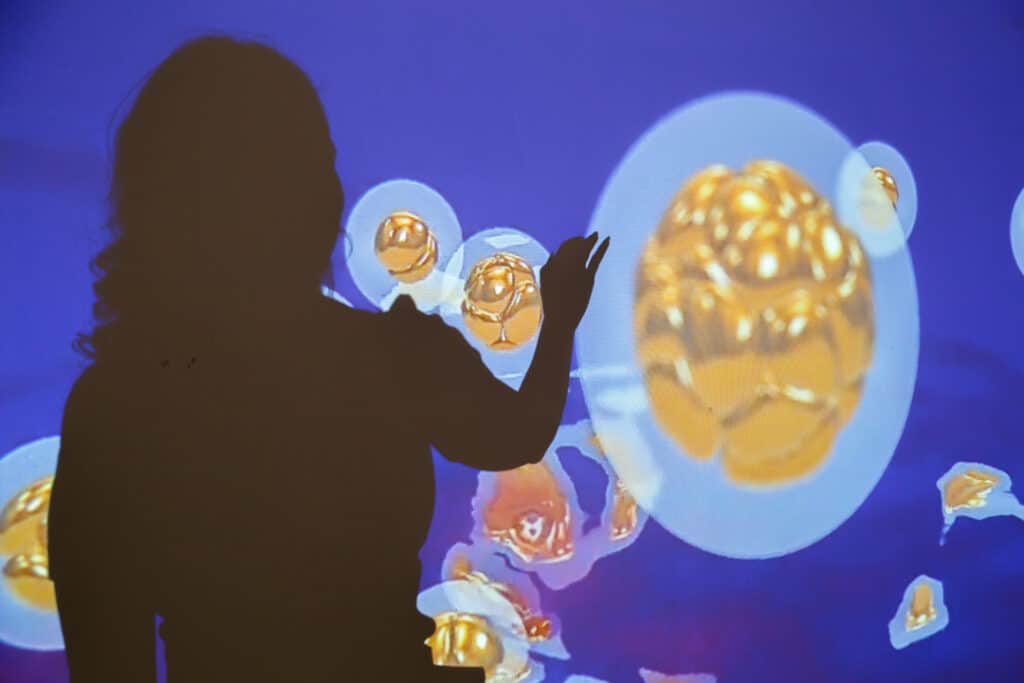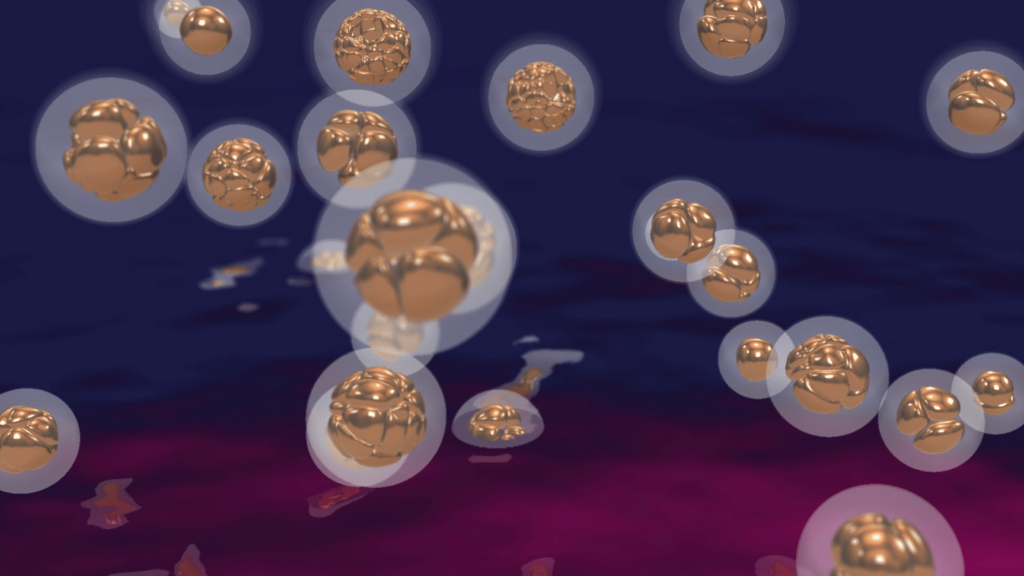
Precious Cells Exhibition
The Precious Cells exhibition explores the world of research with human tissues and early human embryos through an artistic lens, at the intersection of art, sociology, and linguistics.
‘Precious Cells’ delves into the fascinating story of donated human embryos used in scientific research into understanding how we develop: from a fertilised egg to a functioning human being. A better understanding of early human development may one day lead to better treatments for many conditions, such as infertility, childhood cancers, spina bifida, heart defects and many other conditions. This artwork was informed by a series of conversations between the artist, members of the public, scientists, a social scientist and a policy expert specialising in research with early human embryos.
Embryos produced for fertility treatment (but ultimately not used for family building) are a hugely valuable resource for scientists who rely on the generosity of parents’ donations. In the artwork, the 3D digital models of embryos are based on microscope images from laboratory research. The soundtrack proposes extracts from the conversations between members of the public and scientists, as well as quotes from Anne McLaren, a pioneering scientist in developmental biology.
Anna Dumitriu is a pioneering visual artist specialising in BioArt. Her installations, interventions and performances use digital, biological, and traditional media, including bacteria, digital technology, and craft techniques, working with diverse audiences
Artwork Gallery
Common Language’ explores artistic, sociological and linguistic aspects of biological research with human fetal and embryonic tissues. This is represented in a physical art book, created using dos-a-dos binding, which enables two stories to be told simultaneously. One story the book presents is a narrative literature review of human developmental biology in the media during the 20th century and beyond. The other story is a social science report based on interviews conducted with current developmental biologists, reflecting on the language used and challenges faced when discussing their work with the public.
Marianne Wilde is a visual artist and academic with a background in two disciplines, that of the visual arts and creative writing. Her practice and research focus on the relationship between art and science and on collaborative projects between the artist’s studio and the research laboratory. Her work considers the methods and materials that are used to visualise the medicalised and diseased human body since the advent of the ‘genetic revolution’, as well as how genetic diseases and medical technologies are visually, linguistically, and culturally represented and in the narratives that are constructed around these representations.
Artwork Gallery
Blandy worked with scientists at the Gurdon Institute, observing their visualisations of human brains grown from stem cells, using this research as a way to think about consciousness, identity and technology. The organoids of human cerebral tissue, which appear to function as a network after maturation, are frozen and scanned for observation, both in two and three dimensions, by powerful robotic microscopes. This film represents this cerebral tissue examined in the Gurdon labs and overlaid with a poetic voiceover that explores what it means to be conscious and what happens when things ‘go bad’.
David Blandy has established his artistic practice through a series of investigations into the cultural forces that inform and influence him, with recent works examining human consciousness within the digital world. His works slip between performance and video, reality and construct, using references sampled from the wide, disparate sources that provide his (and our own) individualist sense of self.
Artwork Gallery
Cambridge Festival 2024
The Precious Cells exhibition debuted at the Cambridge Festival 2024 in the city centre’s Grand Arcade from 13th – 20th March.
Many thanks to the Cambridge Festival and the Grand Arcade for collaborating with us, as well as the many others from partner organisations who lent their expertise to help put the exhibition together.
If you attended the exhibition and would like to share your thoughts, please feel free to connect with us on Instagram and X/Twitter @gurdoninstitute.


The Human Developmental Biology Initiative
The exhibition was created in collaboration with the Human Developmental Biology Initiative, a Wellcome funded project supporting wider research in human development, which is needed to better understand how humans grow and develop, and how problems with these processes can sometimes arise and lead to miscarriages and congenital abnormalities.
Precious Cells Exhibition was created in collaboration with the Human Developmental Biology Initiative and was funded the Wellcome.
Many thanks to artists Anna Dumitriu, David Blandy and Marianne Wilde for contributing their work to the exhibition. The exhibition was made possible by the support of the Grand Arcade, the Cambridge Festival, Cambridge School of Visual & Performing Arts, the HDBI Insights Group, Progress Educational Trust and researchers at the Wellcome/CRUK Gurdon Institute.





















